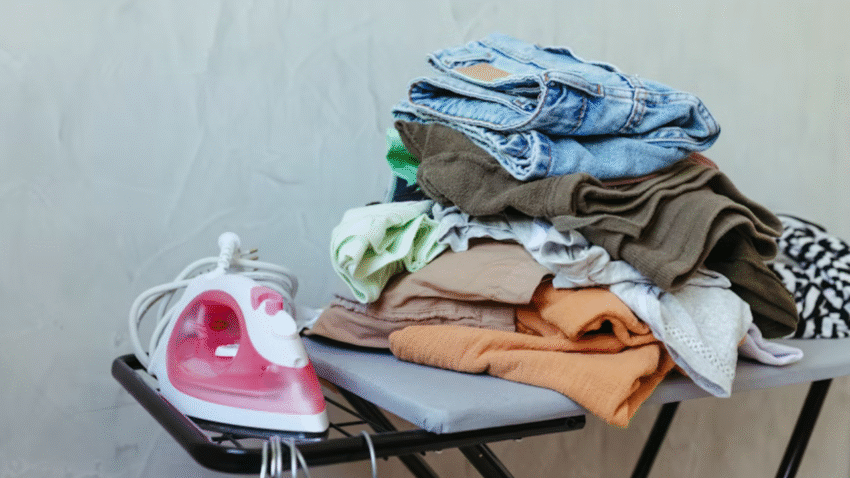Introduction
If your clothes are fading, shrinking, or coming out less than fresh, the problem might not be your detergent—it could be how you’re sorting your laundry. Learning how to separate laundry for best washing results helps preserve fabric quality, keep colors bright, and ensure each load gets properly cleaned. With just a few minutes of sorting before each wash, you can make your clothes last longer and look better.
Why Separating Laundry Matters
Different fabrics and colors have different washing needs. Mixing them together can:
- Cause color bleeding—darks can ruin light-colored fabrics.
- Damage delicate materials when washed with heavy items.
- Result in uneven cleaning because fabrics need different wash cycles and water temperatures.
- Shorten clothing lifespan due to unnecessary wear and tear.
Proper separation ensures the right water temperature, spin speed, and detergent amount for each type of clothing, leading to cleaner, fresher results.
Step-by-Step Guide to Separating Laundry for Best Results
1. Sort by Color
What to do:
- Whites: Towels, socks, underwear, and white shirts.
- Lights: Pastel colors, light grays, and beige items.
- Darks: Blacks, navy, dark grays, deep reds, and other intense colors.
Why it works:
Separating colors reduces the risk of dye transfer, keeping whites bright and colors vivid.
2. Separate by Fabric Type
What to do:
- Heavy fabrics: Jeans, hoodies, towels.
- Light fabrics: T-shirts, blouses, lightweight dresses.
- Delicates: Lingerie, silk, lace, athletic wear.
Why it works:
Heavy fabrics can damage lighter ones during washing, and delicates require gentler cycles to prevent tearing or stretching.
3. Sort by Level of Dirtiness
What to do:
- Keep very dirty items (work clothes, sports gear) separate from lightly worn clothing.
- Pre-treat heavily soiled items before adding them to the washer.
Why it works:
Washing dirty items separately prevents dirt from transferring and ensures heavily soiled clothes get the extra attention they need.
4. Separate New Clothes That May Bleed
What to do:
- Wash new dark or brightly colored clothing separately the first few times.
- Use cold water to minimize dye transfer.
Why it works:
Some fabrics release excess dye during initial washes, which can ruin lighter clothes.
5. Sort by Washing Instructions
What to do:
- Check care labels for instructions like “cold wash only,” “gentle cycle,” or “hand wash.”
- Group items with similar requirements together.
Why it works:
Following care labels helps you avoid shrinking, fading, or damaging fabrics.
6. Consider Specialty Items
What to do:
- Towels: Wash separately to avoid lint transfer.
- Bedding: Wash alone to ensure proper cleaning and drying.
- Activewear: Wash with similar synthetic fabrics to prevent pilling.
Why it works:
Specialty fabrics often have unique care needs that differ from everyday clothing.
Common Mistakes to Avoid
Mistake 1: Washing All Clothes Together
Solution: Always sort by color, fabric, and washing requirements before starting a load.
Mistake 2: Ignoring Care Labels
Solution: Follow label instructions for fabric type, temperature, and cycle setting.
Mistake 3: Overloading the Washer
Solution: Give clothes space to move for proper cleaning and rinsing.
Mistake 4: Mixing Lint Producers and Lint Attractors
Solution: Wash towels and fleece separately from black jeans or dark shirts.
Mistake 5: Forgetting to Pre-Treat Stains
Solution: Treat stains before washing to prevent them from setting.
Extra Laundry Tips & Hacks
- Use mesh laundry bags for delicates to protect them during the wash.
- Turn dark clothes inside out before washing to reduce fading.
- Wash heavily soiled clothes in warm or hot water for better cleaning, but always check labels first.
- Related guide: Check out our article on “How to Prevent Shrinking Clothes in the Dryer” for tips on fabric care after washing.
Conclusion
Separating laundry for best washing results takes just a few minutes but has long-lasting benefits. By sorting clothes by color, fabric, dirtiness, and care requirements, you’ll prevent damage, keep colors bright, and extend the life of your wardrobe.
Bonus Tip: Keep separate laundry baskets for whites, lights, and darks—this way, sorting is done automatically as you go.
Bookmark this guide to make sorting laundry quick, easy, and effective.
